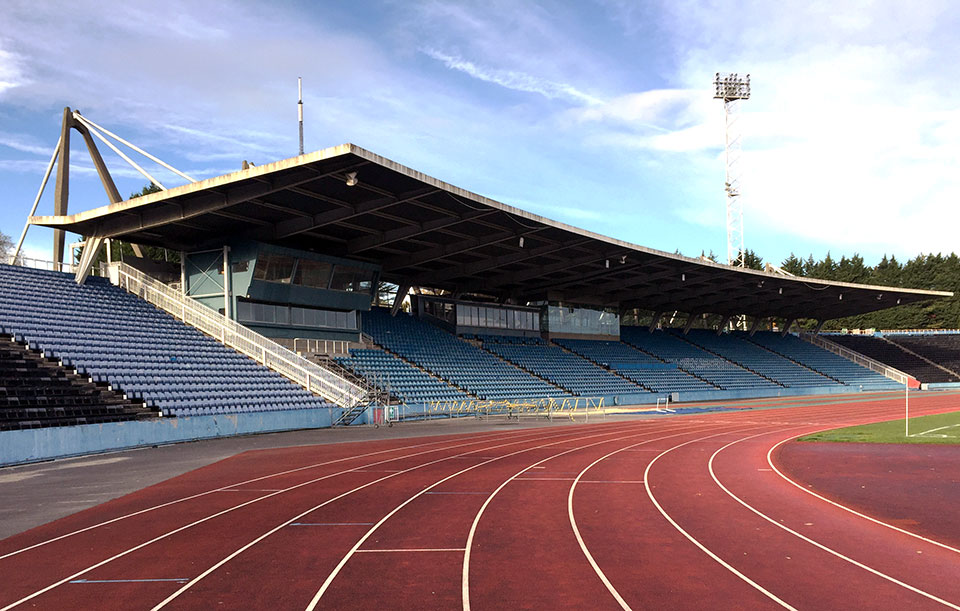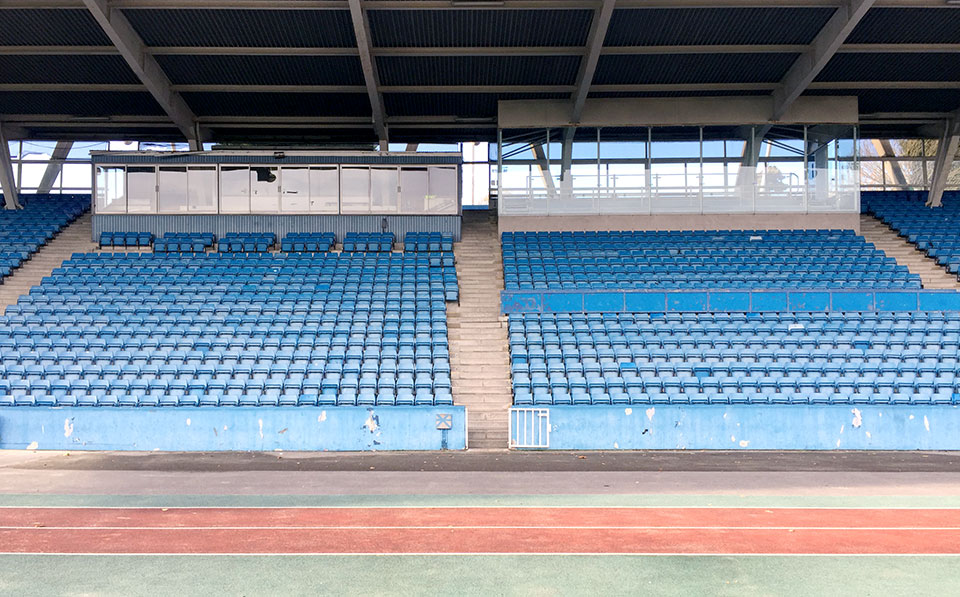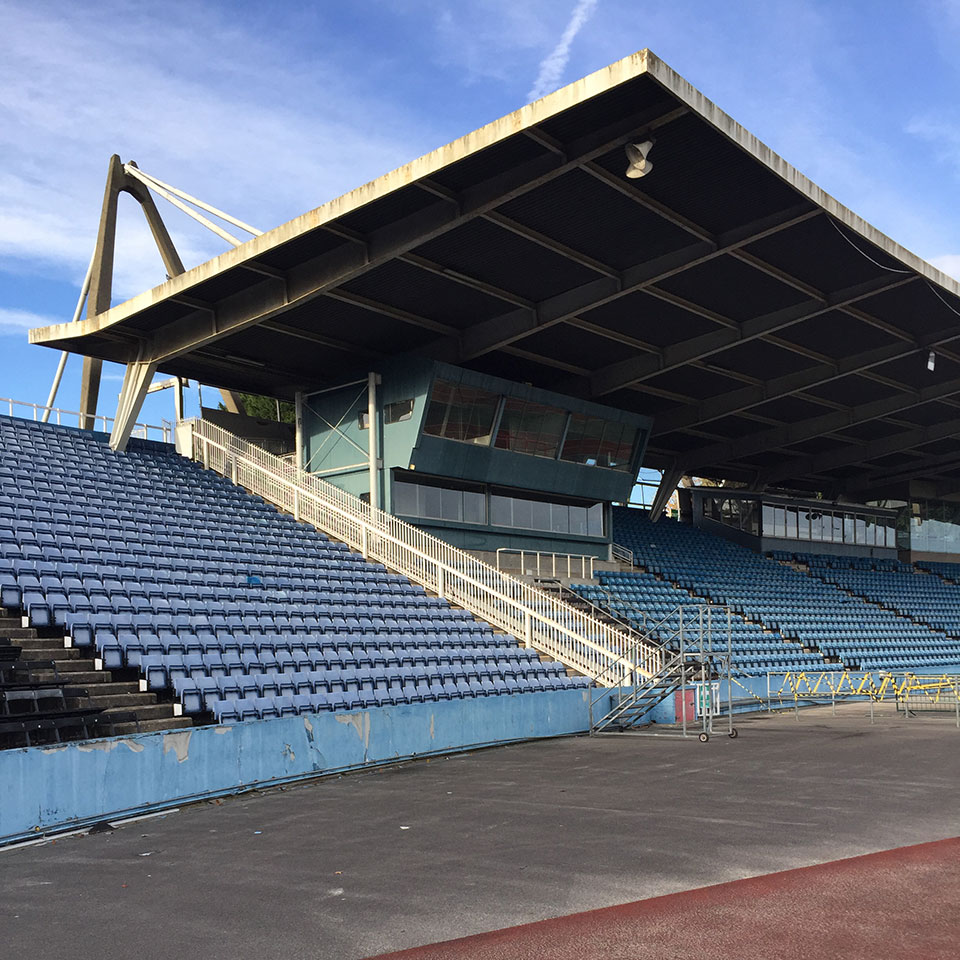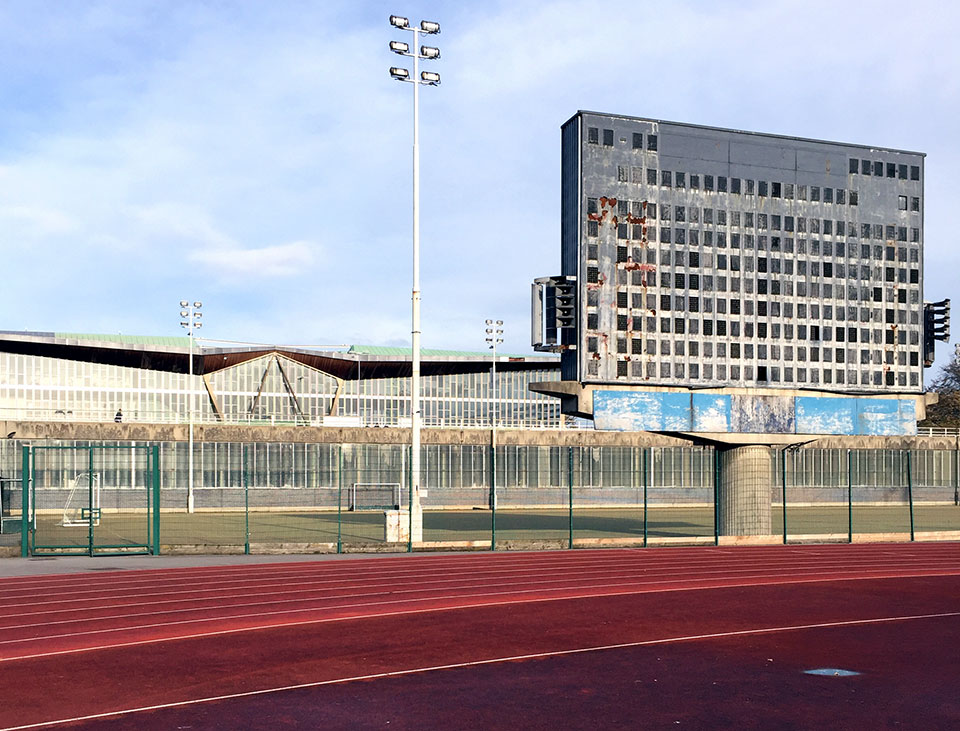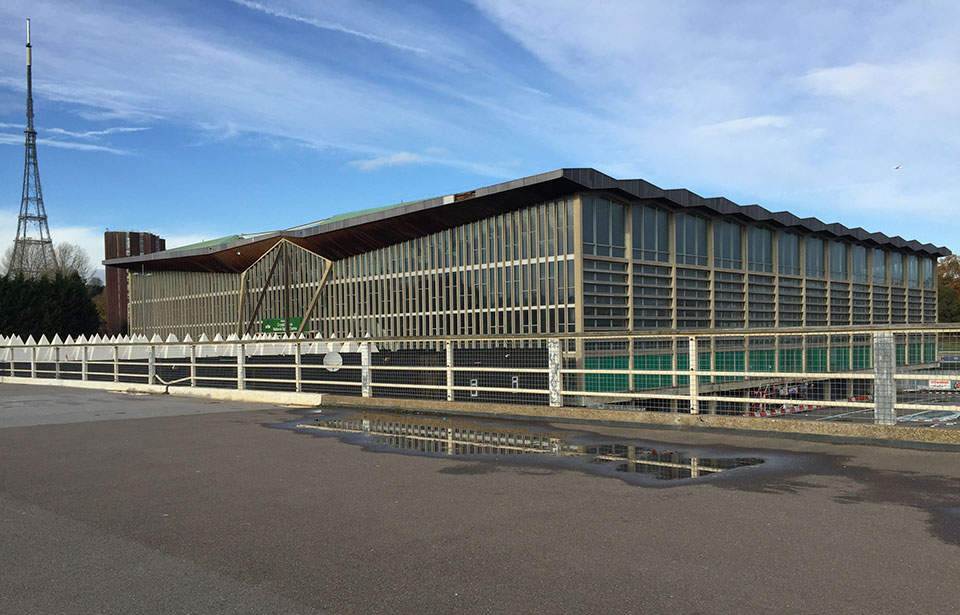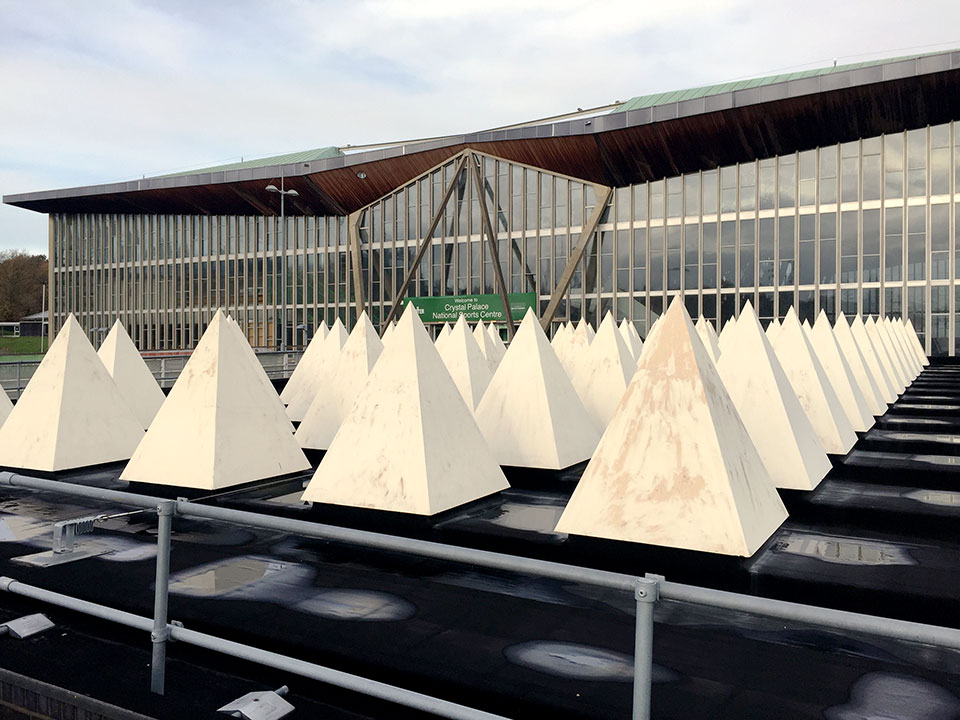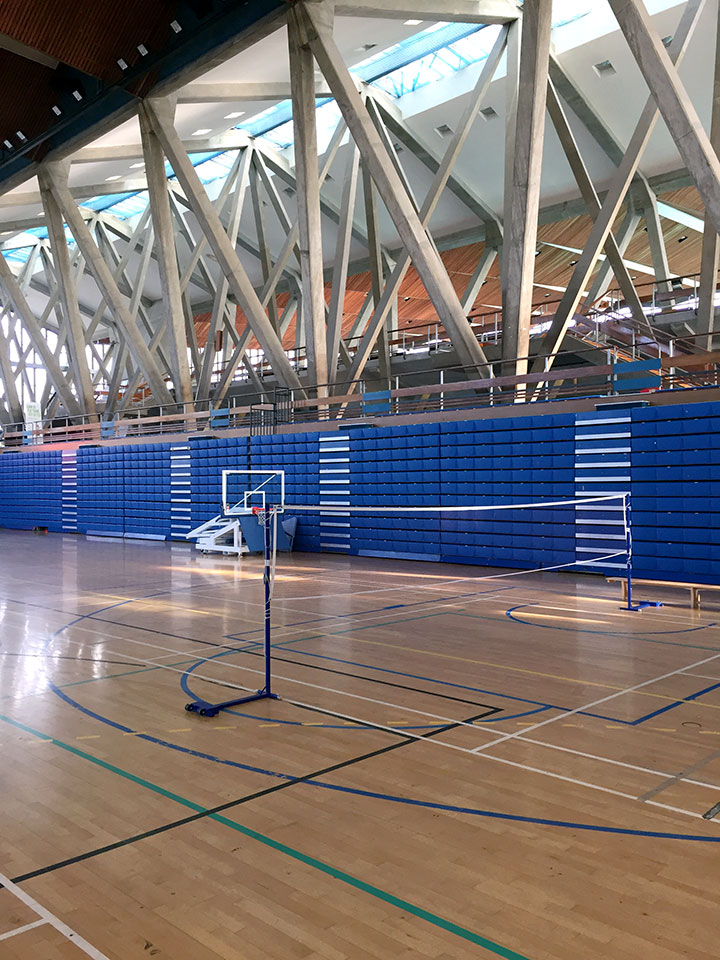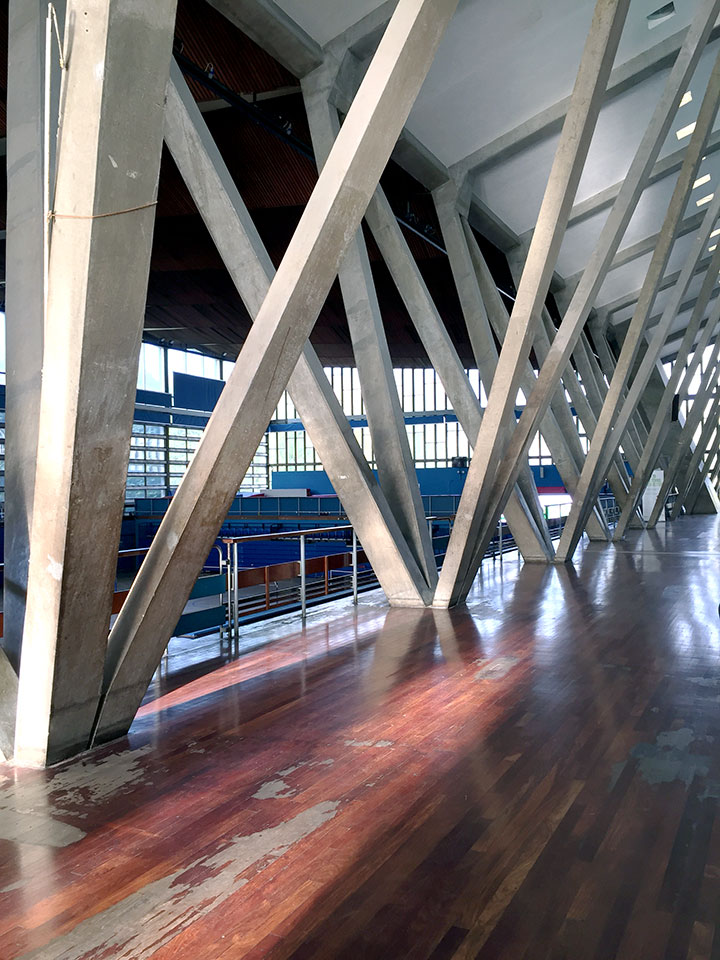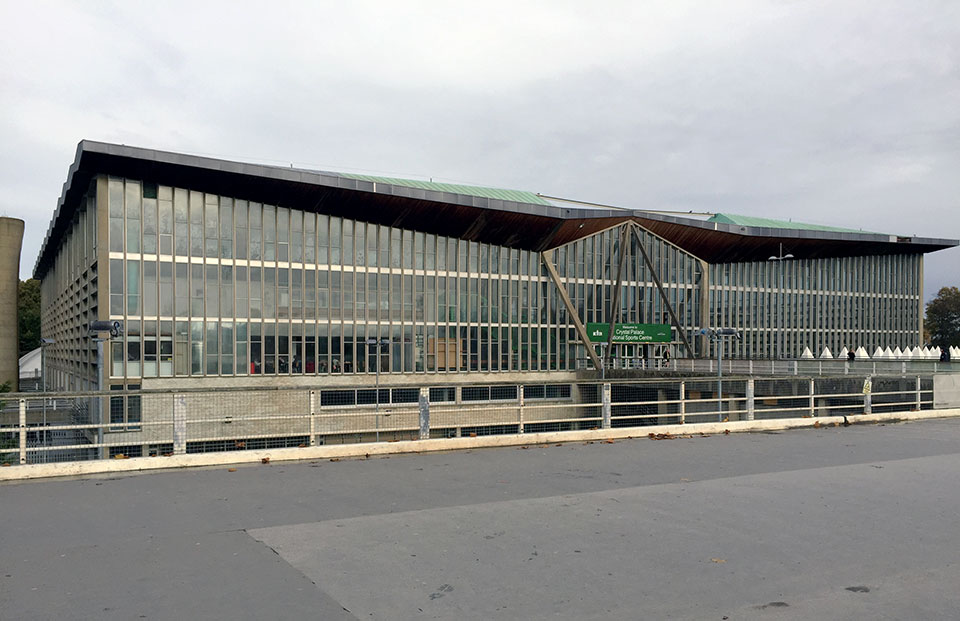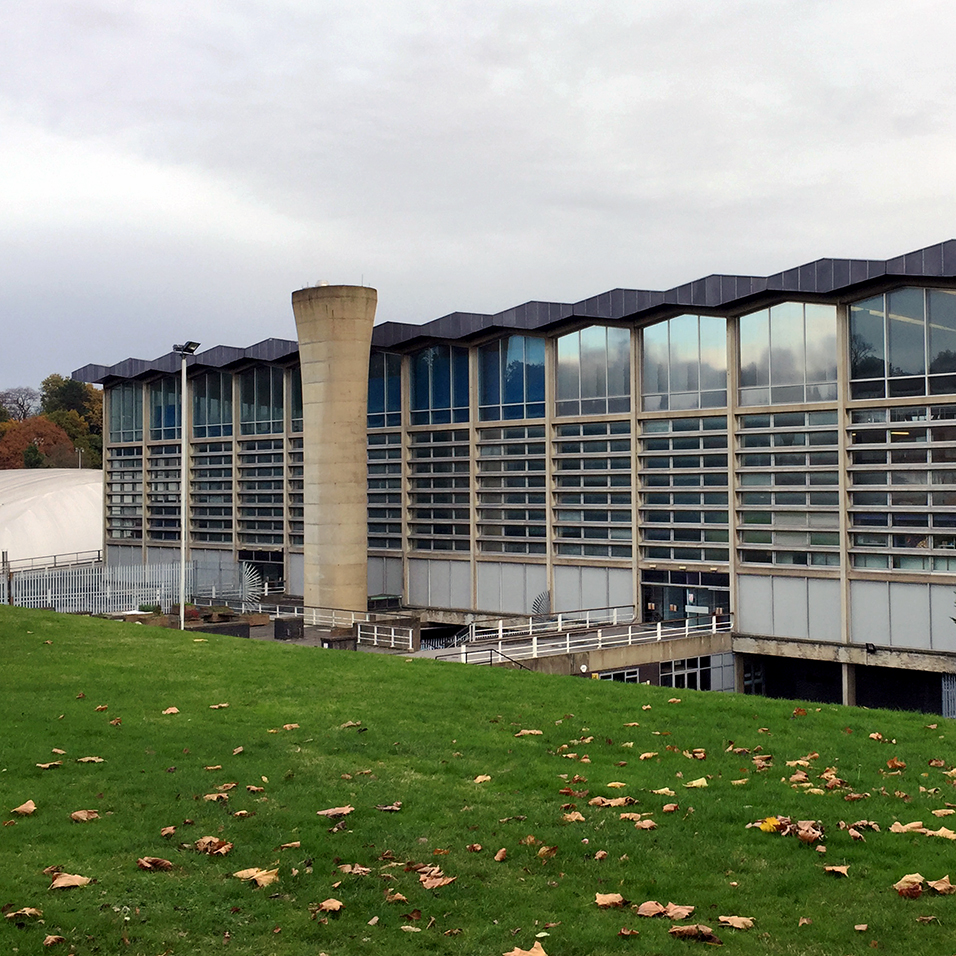National Sports Centre
1964
Paxton’s Crystal Palace was destroyed by fire in 1936, following the Second World War, the largely derelict grounds passed into the hands of London County Council (LCC) in 1951 by an Act of Parliament. The Act gave the LCC the right to use Crystal Palace for ‘the purposes of education, recreation and the furtherance of commerce, art and industry’ [1]. Sir Gerald Barry, Director General of the Festival of Britain, acted as the first consultant responsible for planning the redevelopment of the site that included a new exhibition centre on the upper terraces, a sports centre below and a public park lower down on the sloping site. The designs for the National Recreation Centre were advanced 1953-54 in the offices of the LCC Architect’s Department under Leslie Martin by a team headed by Norman Englebeck and E.R. Hayes, with Barry retained as consultant. The £2m scheme included an indoor sports centre, an outdoor athletics track, an athletes’ hostel and five small staff houses – it was given planning approval in December 1959 [2]. The architects used the sloping site to provide a building of significant height and a substantial stadium nestled into the surrounding landscape surrounded by mature trees. The principal access from the old Central Avenue was extended by a raised bridge link that led to the galleries of the sports hall on the east or to the 12,000 seat arena to the west. The sports centre is cleverly organised in a largely orthogonal plan. A central spine gives way to wet facilities to the right and dry sports to the left, each sunken below the public access level and circulation, allowing the visitor elevated views of the sports taking place below. The pool hall has an eight lane, Olympic size racing pool, a diving pool with a dramatic reinforced concrete diving board and a learner pool at the southern end. The structure, engineered by Ove Arup & Partners, is a concrete ‘W’ frame that runs centrally and is exposed internally to dramatic effect. From this, cantilevered steel roof trusses provide the span across each of the flanking halls, their soffits lined with a warm teak. Conceived as a venue for championship competition, the athletes would arrive through their own entrance at the lower level of the building, again the planning taking advantage of the topography. On the occasion of its opening in July 1964, the provision of the National Recreation Centre was seen as vital to the support of ‘amateur sportsmen competing in international and Olympic events’ and a ‘welcome addition to inadequate existing facilities’ [3]. The well-loved and well used site was listed Grade II* in 1997.
[1] Architectural Review, October 1964, p.257.
[2] Guardian, 12 December 1959, p.6.
[3] Architects’ Journal, 15 July 1964.

